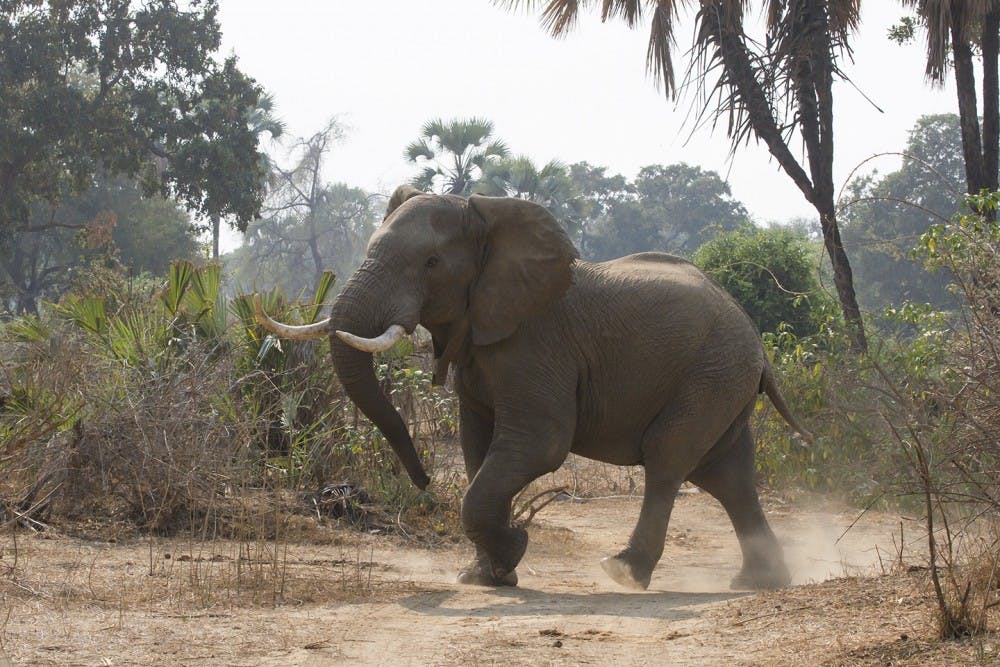The Riverbanks Zoo in Columbia has been rated one of the top 10 zoos in the country, but for elephants, South Carolina is the last place they want to be.
Though Riverbanks Zoo was named the fourth-best zoo in the country by TripAdvisor, South Carolina as a whole has been rated by “In Defense of Animals USA” as having two out of 10 of the worst zoos in America for elephants. The abundant information shows that at several zoos and wildlife parks, elephants in South Carolina have died unexpectedly and far too young.
Starting with Riverbanks Zoo in recent history, two elephants died unexpectedly within six months of each other. First, Petunia, 44, was euthanized after zoo officials found her in her stall unable to stand in December of 2016. Her necropsy revealed severe arthritis in her knees and hip that would have been so painful Petunia could no longer stand on her own.
In captivity, elephants tend to slowly deteriorate due to standing on artificial hard surfaces their whole lives. South Carolina zoos have concrete stalls, crushed gravel floors, and rock formations made of gunite. Unlike the natural soil that elephants are made to walk upon, zoo habitats are simply not natural nor healthy for these creatures.
Then, in May of 2017, Penny, 37, died with an inconclusive autopsy at the Riverbanks Zoo. For comparison, the lifespan of wild elephants is 60 years, but the average lifespan of an elephant in captivity is 40 years, according to director of science, research and advocacy at PAWS, Catherine Doyle.
The other zoo in South Carolina that was put on the worst list was Myrtle Beach Safari, which has one elephant named Bubbles. Bubbles lives among other species of animals and humans and has been subject to pictures and rides by humans every day since 1984. For all this time, Bubbles has not had the company of another elephant, though the Association of Zoos and Aquariums now requires that accredited zoos have at least three elephants living together.
The fact is elephants’ most elementary needs are socialization and space to walk around. In the wild, elephants travel miles a day looking for food. In captivity, elephants are often allotted no more than a few acres of space to roam around and do none of their own foraging. Additionally, the family herd that elephants crave is not satisfied by living with only a couple of other elephants.
Lastly, at the Greenville Zoo in 2014, two elephants died from zoo conditions. Ladybird was 36 years old when she died of colic thought to be caused by a change in weather and was cited to have suffered from severe arthritis and joint disease. Ladybird died in March, leaving one other elephant named Joy at the Greenville Zoo. In June of 2014, Joy was being moved to a Colorado Zoo in order to have the company of other elephants, when she died due to the extreme travel, in her forties.
The common theme is that elephants are not meant to be in captivity and South Carolina has been an example of the many reasons why, including small space, little socialization, hard landscapes, and general exploitation. Many zoos have realized that there is no good way to keep elephants and are phasing out their elephant exhibits. South Carolina needs to do the same.
The next steps for zoo elephants would be to stop breeding them and release all existing elephants to sanctuaries where they can have room to roam about the rest of their lives. As for educational purposes, Keith Lindsay of the Amboseli Elephant Research Project believes that the best way to educate people on elephants is to show videos of elephants acting naturally in their own African and Asian habitats, instead of the stunted and stressed behaviors that elephants display in captivity.
The reality is that elephants could be going extinct within the next decade at the rate that people are killing them for their ivory. The best way to help them is to save the money that would be spent at a zoo and donate to one of the many programs focused on protecting wild elephants.

